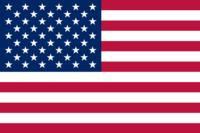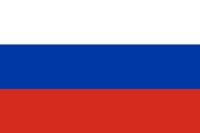
Renovations, DIY Drive Growth In Architectural Coatings Market
2025-02-20 10:08
Leading coatings manufacturers are seeing more interest in DIY projects and home renovations as opposed to new construction.
Rumors is Behr Paint’s 2025 Color or the Year. (Photo courtesy of Behr Paint)
The architectural paint and coatings market is the largest segment in the coatings industry, with estimates from MarketsandMarkets placing it at approximately $85 billion in 2023. Other estimates are fairly similar in terms of revenue.
It is a market that is in flux; for example, as our India/Asia Pacific columnist Yogender Singh points out in his column in this issue, AkzoNobel is reportedly considering pulling out of India. In even larger news, PPG sold its North American and Canadian architectural coatings division to American Industrial Partners (AIP) at a transaction value of $550 million.
“Our company was recently acquired by American Industrial Partners (AIP) and was renamed to The Pittsburgh Paints Company, honoring our mission and deep heritage delivering architectural paint and stain product excellence and innovation to commercial and residential customers across the United States and Canada,” said Jenny Burroughs, SVP and chief marketing officer, Pittsburgh Paints Company.
“The name, The Pittsburgh Paints Company, carries a rich history dating back to 1897, when the original company began marketing paints designed to be both durable and visually appealing,” added Burroughs. “Looking forward, we are excited about the opportunity ahead as we build a faster, more focused, and stronger company.”
The Past Year in Review
Leading architectural paint companies reported growth in the past year. Burroughs noted that housing trends generally are a strong indicator and influence all segments of the architectural coatings industry, but 2024 saw a slower beginning than expected.
“At the start of 2024, there were promising housing forecasts based on anticipated interest rate cuts, but they weren’t realized until later in the year, which delayed an expected recovery,” Burroughs noted. “With that, the architectural coatings segment remained flat in volume in the U.S. and Canada. Whether homeowners are painting to sell their homes or painting when they relocate, mobility is one of the key drivers for housing. When housing is suppressed, as it was in 2024, the architectural coatings industry volume follows.”
John Seidensticker, EVP of sales for Behr Paint, reported that the architectural coatings market has remained resilient, driven by steady demand from both professional and DIY segments.
“While fluctuations in the housing market have influenced overall activity, consumers’ interest in home improvement projects has persisted, driven by a desire to enhance living spaces for both functionality and personal expression,” Seidensticker said.
Jorrit van Rijn, marketing director for AkzoNobel’s Powder Coating business, observed that the architectural coatings market demonstrated steady growth in 2024, despite challenges in the global construction sector and an increasing demand for more sustainable building materials.
“Growth patterns varied across regions, influenced by factors such as urbanization, rising disposable incomes and evolving architectural trends that prioritized aesthetics and durability,” van Rijn noted.
“The market’s emphasis on sustainability and energy efficiency drove greater adoption of more sustainable and low-VOC solutions, including powder coatings,” van Rijn added. “In the Asia-Pacific region, rapid urbanization, infrastructure investments and construction activity in countries such as India fueled significant growth. In contrast, North America and Western Europe experienced slower progress due to high interest rates and a cooling of new construction projects."
van Rijn pointed out that globally, the slowdown in new-build projects shifted attention to renovation and refurbishment, spurring demand for premium, more sustainable coatings.
“Labor shortages in several regions further increased the need for high-performance products that simplify application and reduce downtime,” van Rijn added. “Despite an uneven recovery in construction, the architectural coatings market remained resilient, supported by a strategic focus on sustainability, digitalization and customer-centric solutions. These factors helped stabilize performance and position the industry for future growth.”
“The architectural coatings market demonstrated resilience over the past year, with steady demand from both DIYers and professional contractors who paint,” said Julie Fisher, product manager, Dutch Boy Paints. “Homeowners continued to invest in home improvement projects, seeking quality and convenience in their paint choices. Dutch Boy Paints experienced consistent growth, reflecting consumer trust in our quality, reliable and simple solutions.”
“Wellness trends continue to be important in our home life and colors that embody or support comfort and a nurturing mood continue to take center stage,” said Sue Kim, director of color marketing at Valspar. “Self-expression at home has become more popular and people are craving a happier home.”
“As large corporations continue to dominate, consumers are seeking locally made goods that keep creativity thriving and offer distinct, high-quality options,” said Philippa Radon, the color and design specialist at C2 Paint.
“Color trends for 2025 embrace earthy en terre hues, including shades like the C2 Paint Color of the Year Raku, dusky plums, pale lilacs, creamy mid-tone greens, and accents of muddied yellows and bronze,” said Radon. “These colors bring a soothing harmony that complements natural elements.
“Inspired by the ancient Japanese tea ceremony, C2 Raku offers more than just color; it embodies balance, comfort, and timeless elegance. Its rich hue shifts from oxidized sanguine to dark burgundy, with subtle purple and brown undertones, creating an aura of sophistication and warmth.”
Key Factors in the Market
There are several trends industry leaders are seeing in the architectural coatings market. Perhaps most critical is the interest in DIY projects and renovations as opposed to new construction.
Lisbeth Parada, color marketing manager, Dutch Boy Paints, discussed some important trends she is seeing in the market.
“Key factors influencing the market include homeowners increasingly taking on DIY projects to personalize their spaces, driving demand for affordable, efficient and high-quality paints,” Parada said. “A focus on home renovations and improvements, rather than new construction, has led to more consumer need for versatile and durable paint products. Dutch Boy Paints addresses these trends by offering user-friendly products, expert guidance and insight, as well as solutions that cater to both DIYers and professional contractors who paint.”
Seidensticker said that with existing home sales slowing due to interest rate increases, more homeowners are investing in upgrades to their current homes.
“Homeowners continue to embrace DIY as a cost-effective way to refresh their spaces, particularly as economic pressures shape consumer behaviors,” Seidensticker added.
“Growing environmental awareness is influencing choices, with consumers and building professionals prioritizing low and zero-VOC coatings for cleaner indoor air as well as high-performance coatings that last longer while requiring less material,” Greg Williams, director of strategic innovation and sustainability for Behr Paint, pointed out. “Additionally, there is an increase in demand for product transparency, driving manufacturers to publish Environmental Product Declarations (EPDs) and Health Product Declarations (HPDs) for their products.”
“Commercial environments will continue to be multifunctional as we blur the boundaries of where we work, play, live, and learn,” Erika Woelfel, VP of color and creative at Behr Paint, observed. “Nature-inspired hues will still be prominent as well-being continues to play a larger role in our everyday lives, as well as modern deep hues that create sophisticated statements. Barely-there warm whites will also be a tried-and-true anchor to complement these colorful tones in the built environment.”
Burroughs said that Pittsburgh Paints Company will continue to look to housing for its impact on the industry.
“In 2025, we’re seeing positive housing forecasts and anticipate demand in volume as interest rates decrease and mortgage rates follow,” Burroughs noted. “In 2020 and 2021, we saw a surge in remodeling projects. This slowed from 2022 to 2024; however, we anticipate deferred projects will pick up in the later part of 2025 or early 2026, influencing DIY and residential repainting.
“While the momentum of new home construction permits is projected to slow in 2025, single and multi-family homes that were permitted in 2024 are now near completion, and ready for paint,” added Burroughs. “We anticipate the commercial maintenance segment could also see demand driven by the five-day return to office momentum growing among corporations across the U.S. As more office and commercial rental spaces are occupied, it’s likely commercial maintenance coatings will see growth.”
van Rijn reported that sustainability is a key driver of growth in the architectural coatings market, fueled by regulations and end-user demand for green building solutions that enhance durability, aesthetics and energy efficiency.
“Based on the numbers of LEED-certified building projects, the green buildings market achieved a compound annual growth rate (CAGR) of approximately 9.4% from 2023 to 2024, with both new construction and renovation gaining momentum,” van Rijn said. “AkzoNobel supports this trend through innovative solutions such as our Cool Chemistry products – which can help reduce operational carbon in warm climates – and Interpon D Low-E powder coatings, which cure at lower temperatures to save energy and reduce the embodied carbon of coated building materials. These innovations align with AkzoNobel’s commitment to sustainability. We provide detailed product carbon footprint data as part of our focus on a whole life carbon approach for buildings.
“As the first global paints and coatings company to receive SBTi approval in 2021, AkzoNobel aims to cut its carbon footprint by 50% across the construction value chain by 2030,” van Rijn added. “By leading in sustainable innovations, we’re contributing to creating more green buildings and more sustainable cities worldwide.”
‘Green’ Technologies
There is increasing interest in environmentally friendly or “green” products, and paint and coatings manufacturers are developing products that meet these needs.
“We have seen a consistent demand for high-quality, water-based paints and coatings with low and zero volatile organic compounds (VOCs),” Burroughs said. “Not only do these products impact indoor air quality, but they also ensure a faster return to service or no service disruption in commercial spaces like offices, hotels or retail locations.
“More recently, there is also a growing focus on circularity and bio-based and renewable raw materials,” added Burroughs. “While these materials are emerging, the industry is exploring alternatives to fossil fuel-derived ingredients, such as bio-based resins and solvents. The industry is also seeing an increasing desire to minimize and remove any material of concerns that have potential impact to the environment and our health such as APEO, certain biocides, and PFAS.”
Fisher said that Dutch Boy Paints is committed to sustainability through innovations such as technological advancements in products, like the improved Platinum Plus with Stain-Shield Technology and Anti-Scuff Formula, which ensure longer-lasting finishes, reducing the frequency of repaints and related use of resources.
“We continue to develop water-based paints that deliver exceptional performance while aligning with eco-friendly values,” Fisher added.
Williams noted that Behr Paint Company is committed to sustainability, transparency, and building a positive environmental and social legacy.
“Our efforts focus on developing low-VOC formulations and high-performance water-based technologies,” added Williams. “These innovations contribute to cleaner indoor air and help reduce the need for frequent repainting, aligning with our mission to minimize waste and promote longevity. Our paint cans also include a first-of-its-kind Simple Pour Lid and packaging made from 100% post-consumer recycled plastic.”
van Rijn noted that AkzoNobel is focusing on advancing more sustainable solutions for architectural applications through innovative technologies in powder coatings, coil coatings and
wood finishes.
“For powder coatings, we’ll continue innovating our Interpon D1036 Low-E and Interpon D2525 Low-E offering, which had an initial launch in the Europe and Middle East region,” said van Rijn. “We aim to further reduce curing temperatures and continue helping customers to lower their energy consumption, reduce costs and minimize carbon emissions during the application process, while also maintaining exceptional durability and aesthetic quality in architectural projects.”
van Rijn observed that labor shortages in several regions have heightened the demand for high-performance products that are easier to apply and reduce waste.
“To address this need while maintaining a strong focus on sustainability, we’ve developed innovations such as our AI-powered FlightPath Pro solution,” said van Rijn. “This advanced technology leverages machine learning to optimize application processes, improve coating accuracy and increase overall efficiency, helping customers save both time and resources.
“Another area of focus is electron beam (e-beam) curing for coil coatings, which uses a directed stream of electrons to harden coatings without relying on traditional thermal curing methods,” added van Rijn. “This approach reduces energy consumption, improves productivity and avoids the environmental impact of gas or electric ovens. Collaborating with Wuxi El Pont Radiation Technology Co., Ltd., we’re working on e-beam processes to provide high-quality finishes with a lower carbon footprint, supporting more sustainable building design practices.”
In wood finishes, van Rijn said that AkzoNobel is emphasizing waterborne coatings to reduce volatile organic compound (VOC) emissions and minimize solvent content. These coatings, including one and two-component systems with polyurethane hardeners, provide durability comparable to traditional solvent-based finishes while being more sustainable.
“Suitable for applications ranging from furniture to building products, these waterborne solutions help customers achieve excellent results with a reduced environmental impact, aligning with the architectural sector’s growing focus on more sustainable practices,” said van Rijn. “By concentrating on these innovations, AkzoNobel is supporting the transition to more sustainable solutions, helping customers balance performance with environmental responsibility.”
Expectations for 2025
Modest growth in the architectural coatings market appears to be in the forecast for 2025.
“We are optimistic about growth in 2025, driven by continued interest in home personalization and new construction projects,” Seidensticker said. “The increasing preference for sustainable products and trend-driven designs will further fuel demand. At Behr, we’re prepared to meet this momentum by delivering innovative products, impactful colors, and exceptional customer experiences.”
“Overall, we anticipate the architectural coatings industry will experience low- to mid-single-digits growth in overall volume for both the DIY and Pro segments in 2025,” Burroughs said. “Based on housing and remodeling forecasts, there is continued optimism for growth in the DIY and residential repaint segments. Additional growth will come from new home construction as development projects permitted in 2024 will continue into 2025 for completion.”
“We expect the architectural coatings market in 2025 to show modest growth, influenced by regional differences and evolving customer priorities,” said van Rijn. “In developed regions, the market is likely to remain stable due to its maturity, while developing economies with growing populations and expanding infrastructure will present greater opportunities for growth.
“This growth will be supported by increasing demand for more sustainable solutions,” van Rijn added. “For example, our Interpon D powder coatings offer significant sustainability advantages for customers. They include Interpon D Low-E, a powder coating that cures at a lower temperature to save energy, and the Interpon D Natural Metals collection, which provides a cost-effective and more sustainable alternative to real metals.
“In addition, as customer expectations shift toward sustainability and efficiency, service-oriented solutions such AkzoNobel’s FlightPath Pro software are expected to drive further growth,” said van Rijn. “This AI-powered tool helps customers optimize their powder coating processes, improving efficiency and reducing their carbon footprint. While the overall growth rate may be modest, these innovations and trends will position us to support and capitalize on the evolving needs of the architectural coatings market in 2025.”
David Savastano, Contributing Editor
source:coatingsworld
More Hzinfo
- Secretary Lu Weidong conducted research and condolences to Dynamic Chemical during the Spring Festival
- On February 1, 2025,our company welcomed a delegation led by Lu Weidong, a member of the Standing Committee of the Municipal Party Committee.
-
2025-02-21
- Looking back and looking ahead, gathering strength again, and striving to compose a new chapter
- On January 11, 2025, the company held a mid level performance evaluation meeting for 2024, where senior management gathered to learn from the achievements of 2024 and draw a blueprint for the future.
-
2025-02-21
- Appearing at the International Coatings Exhibition, seeking new opportunities in the industry
- From December 3rd to 5th, the China (Guangzhou) International Coatings Exhibition was grandly held at the Canton Fair Exhibition Hall.
-
2025-02-21

 English
English 简体中文
简体中文 Русский
Русский إنجليزي
إنجليزي